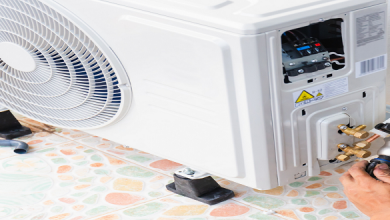What are the Uses of Platinum Group Metals in Today’s World Today?

These metals have unique properties such as their oxidation resistance and high melting points. They also have outstanding conductivity, corrosion resistanceivity, and catalytic capabilities. Because platinum group metals have a wide range of applications, they are well-suited for many industries like those listed here.
Medicinal
Since decades, platinum-based drugs have been used in cancer treatment. They have saved many lives. Cisplatin was the first anti-cancer drug to be approved in the 1970s. To aid the fight against cancer, other cisplatin analogs have been created such as carboplatin or oxaliplatin. The new drugs, which were developed through advanced research, have lower toxicity levels and are effective against a wide variety of cancer types.
Platinum group metals are used in diagnostic devices, as well as in cancer treatment. Platinum is used, for example, in defibrillators and pacemakers. Platinum can be used to treat blocked veins because it is visible on X-rays. Dental bridges and crowns are made from platinum-gold alloys. You can increase the strength of your alloys by adding small amounts of high-quality Platinum.
Autocatalysis
Autocatalysis can make fuel emissions less toxic. The three-way catalysts consisting of platinum, palladium, and rhodium control the emissions from petrol engines. They remove nitrous oxides and hydrocarbons from exhaust emissions. Rhodium is the most efficient in converting nitrous dioxides to nitrogen and thus saves the environment.
Platinum and palladium have similar catalytic properties, but palladium is more popular for commercial purposes because it’s cheaper. The demand for palladium is steadily increasing over the last decade. Since the popularity of low Sulphur diesel fuels, palladium has been the preferred choice because it can easily react with diesel emissions.
Jewelry
The popularity of platinum and palladium jewelry is well-known around the world, particularly in Asian markets. White-metal ornaments are more pure than gold jewelry, with purity levels between 950 to 990. Palladium, which is lighter than platinum makes it a better choice for ornament making. Iridium and Ruthenium can also be used in jewelry. However, they are used mainly as grain refiners since less than 0.5% is used.
Glass
It is the preferred material for glass production due to its excellent resistance against wear and corrosion by high temperature platinum. It is a major market for platinum group metals, with more than 350,000 ounces being consumed annually. The majority of the volume is used to produce liquid crystal displays, which are used in flat-screen televisions and computer monitors. An industry uses approximately 55,000 ounces of Rhodium annually.
Catalysts
Catalysts can make chemical reactions more efficient and less expensive in industry. The main use of platinum group metals in manufacturing silicones is in construction and automotive. Paraxylene is also made from platinum, which is a precursor material for the production of polyester fiber and polyethylene. The production of purified Terephthalic-acid is catalyzed by palladium.
To produce nitric acids, platinum and palladium gauzes can be used. Vinyl acetate is made from palladium-gold alloy catalysts. This is used to make paints, polymers, textiles and adhesives. To make acetic acid, oxo-alcohols and other chemicals, rhodium catalysts can be used. The chloralkali industry uses titanium coated with ruthenium, iridium, or ruthenium. The platinum catalysts can be used in the isomerization or reforming reactions of petroleum industries.
Automotive
They are used in autocatalysis as well as for oxygen sensors and spark plugs. New vehicles come with platinum-tipped sparkplugs that have a useful life expectancy of more than 100,000 miles. The element’s resistance against chemical and electrical erosion is what enables this to be possible.
The oxygen sensors regulate the amount of air-fuel mixture that is introduced to the combustion chamber. This makes platinum an important part of the engine. This sensor detects oxygen levels in exhaust gases from the engine, and helps to correct the fuel to air ratio. This is crucial in optimizing catalyst efficiency and reducing emissions. To prevent oxygen resistance at temperatures above 1500 degrees Celcius, platinum coatings are used for airplane engines.




